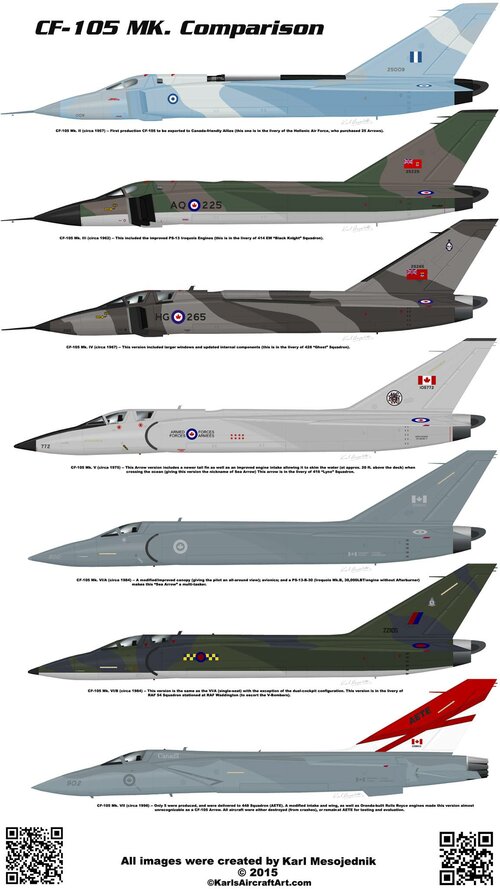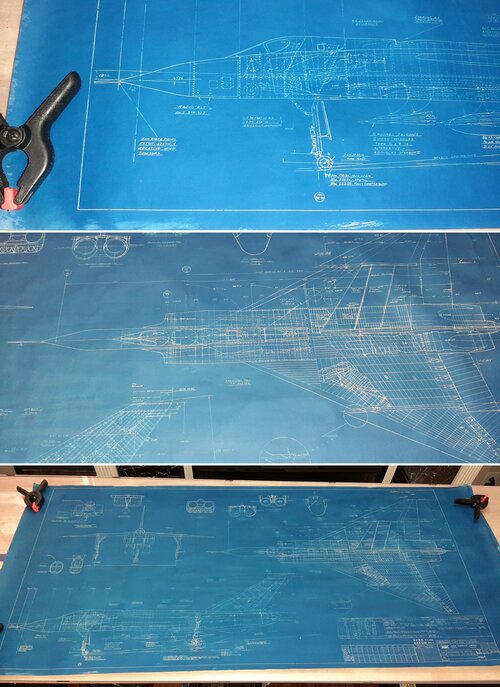Greetings all and sundry Arrowites of the Web.
Due to a couple of house moves, computer upgrades etc I'm deficient in my profile collection and trying to recover some of Karl Mesojedniks Arrow Art. Karl died last year.
His websites were

 www.deviantart.com
www.deviantart.com

 www.facebook.com
and he never got to complete
www.facebook.com
and he never got to complete
http://www.karlsaircraftart.com
In particular I'm interested in recovering the following
MkIX Canadian Forces 'The Big 2' Trainer (105932) | French Navy | Luftwaffe Mk. 9K/L
MkVII Dual Seat Trainer: Canadian Armed Forces Arrows (410 Sqn) (105749)
EW-variant: Canadian Forces 414 'Black Knight' EW Sqn. (105779)
KC-Variant: Royal Austrailian Air Force (15189) Tanker
MkVI Orenda Gas Turbine Division (Iroquois testbed) in bare-metal finish (CF-AOE)
Yours
Rus
an example of his work

Due to a couple of house moves, computer upgrades etc I'm deficient in my profile collection and trying to recover some of Karl Mesojedniks Arrow Art. Karl died last year.
His websites were
karlwjm - Hobbyist, Digital Artist | DeviantArt

Karl Mesojednik's Aircraft Art
Karl Mesojednik's Aircraft Art. 91 likes. Created to promote and feature my Aircraft Art website located at: http://www.karlsaircraftart.com, and where new Profile Designs and Reduxes will be...
 www.facebook.com
www.facebook.com
http://www.karlsaircraftart.com
In particular I'm interested in recovering the following
MkIX Canadian Forces 'The Big 2' Trainer (105932) | French Navy | Luftwaffe Mk. 9K/L
MkVII Dual Seat Trainer: Canadian Armed Forces Arrows (410 Sqn) (105749)
EW-variant: Canadian Forces 414 'Black Knight' EW Sqn. (105779)
KC-Variant: Royal Austrailian Air Force (15189) Tanker
MkVI Orenda Gas Turbine Division (Iroquois testbed) in bare-metal finish (CF-AOE)
Yours
Rus
an example of his work











